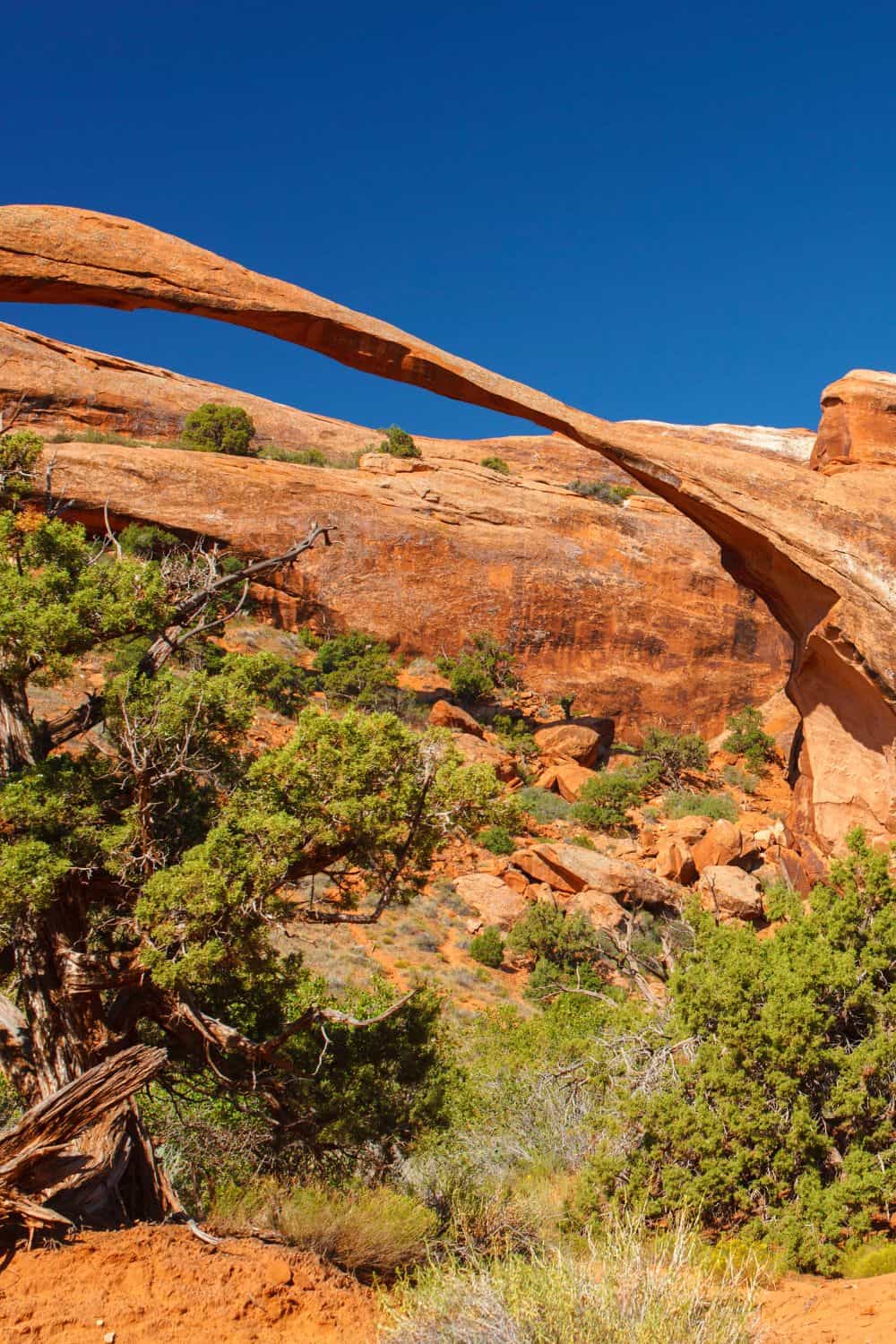
Arches National Park, located in southeastern Utah, is famous for its stunning red rock formations and natural arches. One of the most famous and impressive arches in the park is Landscape Arch, which is located in the Devil’s Garden area of the park.
Landscape Arch is a massive sandstone arch that spans over 290 feet, making it one of the largest natural arches in the world. The arch is so long and thin that it almost looks like it could break at any moment, and visitors to the park are often left in awe of its sheer size and beauty.
Geology and Formation
Landscape Arch was formed over millions of years by the forces of erosion and weathering. The area that is now Arches National Park was once covered by a shallow sea, which eventually receded and left behind layers of sandstone and other sedimentary rocks.
Over time, water and wind erosion wore away at the rock, creating the unique landscape that we see today. The sandstone formations in the park are made up of a layer of hard rock on top of a softer layer, which erodes more quickly. This erosion process creates arches, bridges, and other unique rock formations.
The Formation of Landscape Arch
Landscape Arch was formed by a combination of water and wind erosion. The arch is located in the Devil’s Garden area of the park, which is known for its steep canyons and towering rock formations.
The arch was formed from the same Entrada sandstone that makes up much of the rock formations in the park. Over time, water and wind eroded away at the softer rock layers underneath the hard sandstone, creating a natural bridge. As the bridge continued to erode, it became thinner and thinner, until it eventually formed the long, thin arch that we see today.
Visiting Landscape Arch
Visitors to Arches National Park can visit Landscape Arch by taking a short, relatively easy hike from the Devil’s Garden Trailhead. The trail to Landscape Arch is just under two miles round trip and is mostly flat, with a few steep sections near the end.
Along the way, visitors can enjoy stunning views of the surrounding red rock formations, including other arches and spires in the Devil’s Garden area. The trail is well-marked and maintained, and there are plenty of signs and interpretive displays to help visitors understand the geology and history of the park.
Although Landscape Arch is an impressive sight to see, visitors should exercise caution when viewing the arch, as it is a natural formation and could potentially be unstable. In 1991, a section of the arch measuring 60 feet long and 11 feet wide collapsed, reminding visitors that the natural formations in the park are constantly changing and evolving.
Other Attractions in Arches National Park
In addition to Landscape Arch, Arches National Park is home to many other stunning rock formations and natural wonders. Some of the most popular attractions in the park include:
- Delicate Arch: This iconic arch is perhaps the most famous natural feature in the park. The arch is located on a steep, rocky trail that offers stunning views of the surrounding landscape.
- Balanced Rock: This massive rock formation appears to be precariously balanced on a small pedestal of rock. The formation is a popular spot for photographs and is easily accessible from a nearby parking area.
- Fiery Furnace: This maze of narrow canyons and rock formations is a popular destination for hikers and adventurers. Visitors must obtain a permit to explore the Fiery Furnace, and the area can be difficult to navigate.
- Park Avenue: This impressive canyon is lined with towering rock formations that resemble skyscrapers. Visitors can hike the easy Park Avenue Trail to get up close to these stunning formations.
Related posts:
Arches National Park in southeastern Utah is home to some of the most iconic geological formations in the United States. The park is known for its many natural arches, including one of the most famous arches in the world, the Delicate Arch....
Arches National Park is a scenic destination in the state of Utah. It is north of Moab, bordered by the Colorado River in the southeast. The park is famous for its over two thousand natural sandstone arches, including Delicate and Landscape Arches. O...
Arches National Park is without a doubt one of the nicest Utah national parks, which means plenty of cars and other people passing by. But if you get there in the winter, you can probably expect quite a few fewer people! Also, if you're going hiking ...
One of the best ways to explore the beauty of the arches is through camping. There are several options for campsites in Arches National Park. If you don't have a park pass, camping within the park is an excellent way to save money on entrance fees. Y...
Arches National Park rests north of Moab in Utah. It is known to be the place of more than 2,100 natural sandstone arches, including the world's largest, red-colored Delicate Arch, which stands nearly six hundred feet high. Long, narrow Landscape Arc...
If you're visiting Arches National Park for the first time, it is a great idea to bring a GPS or some other type of tracking system. Cell service can be spotty here, so a GPS is your best option for finding your way back. If you don't have a GPS or t...